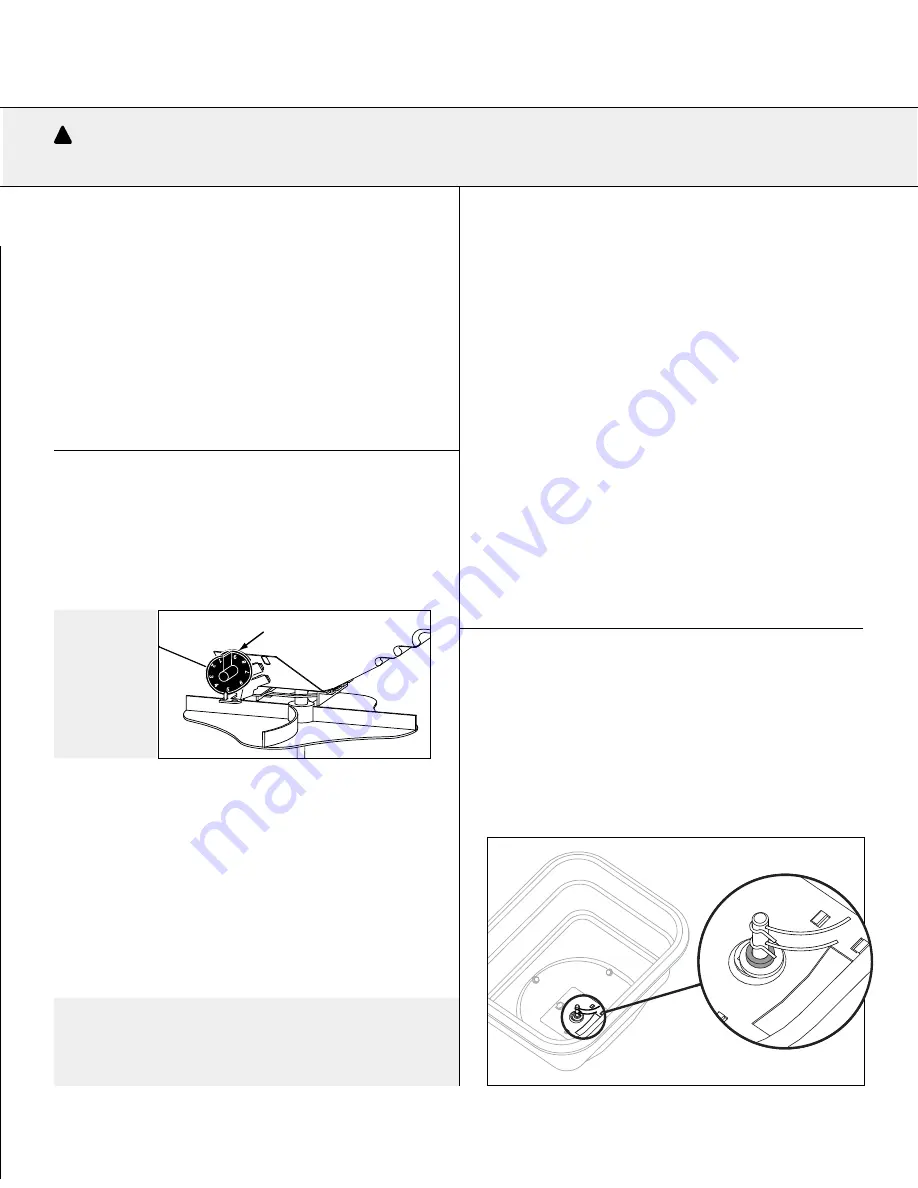
Page 9
English Manual
1008290-G
Become familiar with the operation of the
spreader Before you put material in the hopper.
Use and Care
WARNING:
When spreading products containing
herbicides, exercise extreme caution with respect to
careless spreading and to wind-drift.
CONTACT OF SOMe PRODuCTS ON
SOMe PlANTS CAN Be FATAl
If a dial setting is not found, use the size and weight
comparison table found in this manual. Determine a
dial setting on the low side. If the setting proves to be
too low, cover the area more than one time. A higher
setting can be used when a proven dial setting is
established.
Remember: Published dial settings are
approximate only.
The operation of the spreader,
the condition of the material (damp or dry or over-
pulverized) and weather conditions, are all
contributing factors. For these reasons, it is often a
good idea to spread the area 2 times - or one-half
rate - in cross directions (SEE INFORMATION ON
ONE-HALF RATE DIAL SETTINGS). One-half rate
dial settings are highly recommended under damp
and humid conditions.
rOtary aGitatOr
Use the rotary agitator only if needed. Free-flowing,
lump-free materials will not require the agitator.
The ROTARy AGITATOR IS eASIly
INSTAlleD OR ReMOveD.
Note the clockwise
rotation and sweep. Place felt washer around spinner
shaft before inserting agitator.
•
Practice walking with the spreader, opening and
closing the rate gate at the appropriate times.
•
Travel at a constant speed and operate the
spreader lever position.
Remember: Open the rate
gate after the spreader is in motion at operating
speed (about 3 mph, or at a brisk walking pace).
•
Close the rate gate while spreader is still at
operational speed.
dial SettinG infOrmatiOn
The RATE DIAL has 9 numbers with 10 stops between
each number. This allows for accurate control of the
spreading rate. The dial is set with only a turn, it will
automatically lock into the set position.
•
The spread width ranges from 4 - 12 ft. wide
depending on the volume/density, particle size of
the material, and rate of travel.
•
The spread thins or feathers at the outer edges,
eliminating sharp, "Edge Of Spread" lines which
cause stripes and streaks. Extra coverage can be
given under trees and other heavy feeding areas
without showing "Edge Of Spread" lines.
•
Gaps and double overlaps are less likely. Small
errors in travel are forgiven and do not show.
Line up
the dial
number
with
the dial
indicator.
Rate Dial
!
read befOre uSinG






























